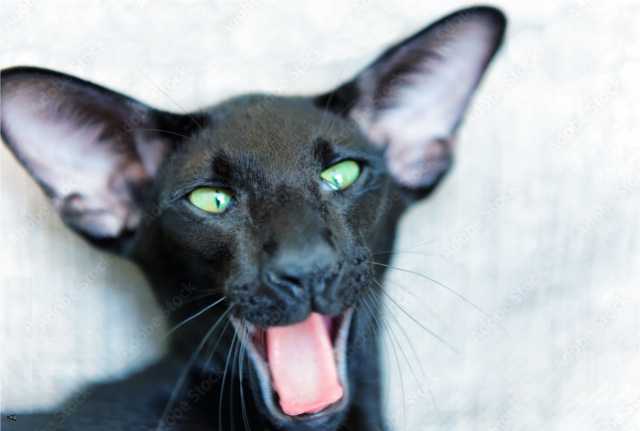|
The Feel-Good Guide to Sports, Travel, Shopping & Entertainment
|
| Main | Sports Events | Holidays & Observances | Pop Culture | Shopping | Travel |
MAIN While the classic Siamese is most noted for its pointed colors and blue eyes, the Oriental is often known as "the rainbow cat" for the breed's 300 various coat color patterns. Like their close Siamese cousins, Orientals are sleek and elegant with strong constitutions that belie their slender, lanky appearance.
Often described as more dog-like in their strong attachments to human companions, Orientals are not exactly low maintenance in terms of independence, and usually require lots of loving attention. They often get it, too, mostly through their unbounded energy and quick intelligence. Much preferring travel to staying home alone, Orientals are also one of the few breeds that will adapt to a collar and leash for quiet strolls down the street.
Generally hearty and long-lived, Orientals do not require any special diet or grooming other than an occasional brushing, more often for longhair breeds. Overfeeding is a common result of their losing their long, sleek appearance, and frequent exercise is usually called for if only as a release for their energetic natures.
Oriental Cat Breed Profile - Excellent read with fine photos describing the Oriental cat's physical attributes and personality. Breed : Oriental - The Cat Fanciers' Association guide to the breed's behavior, care and feeding, including stunning photos and related resources. Oriental Shorthair - Brief Wikipedia overview with historical background, coat pattern survey, photo gallery.
also see in Pets -> Cats -> Abyssinian | American Shorthair Exotics | Maine Coon | Persian | Ragdoll | Siamese | Sphynx
|
 First seen in the West when they were brought to Britain from Siam (Thailand)
in the 19th century, the Oriental is a close relative to the
First seen in the West when they were brought to Britain from Siam (Thailand)
in the 19th century, the Oriental is a close relative to the 

